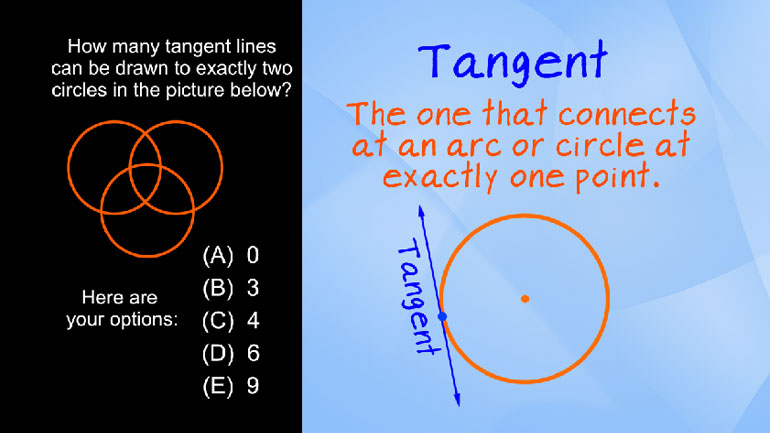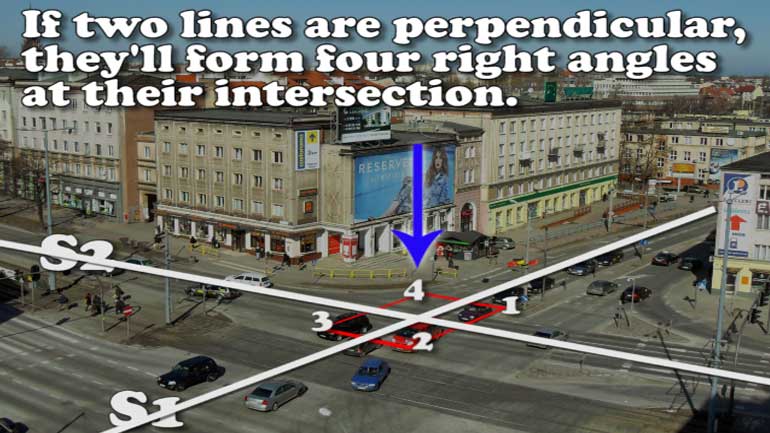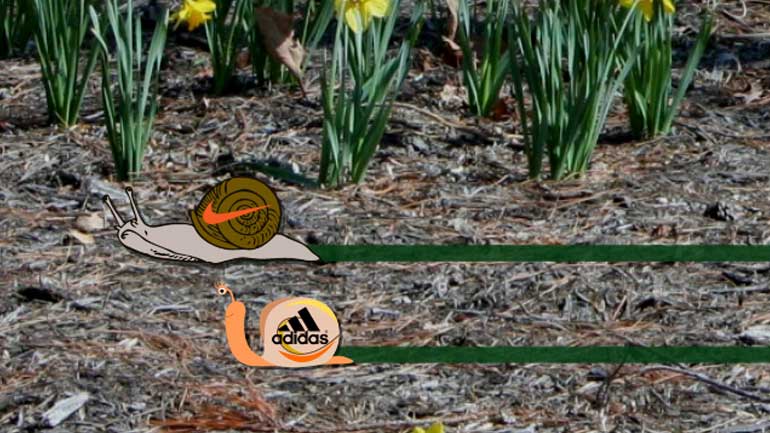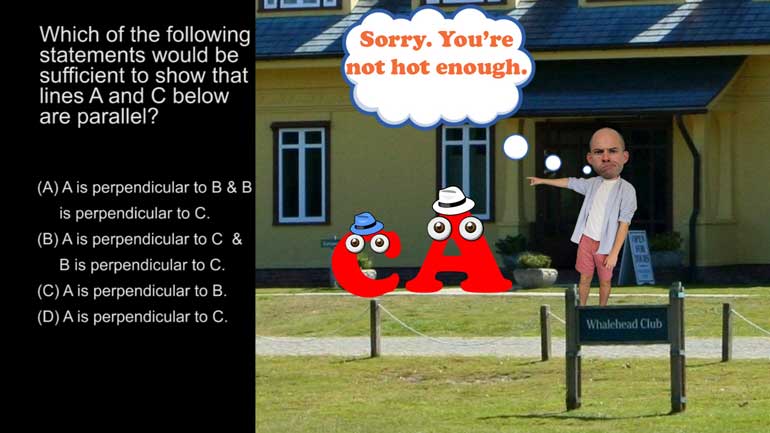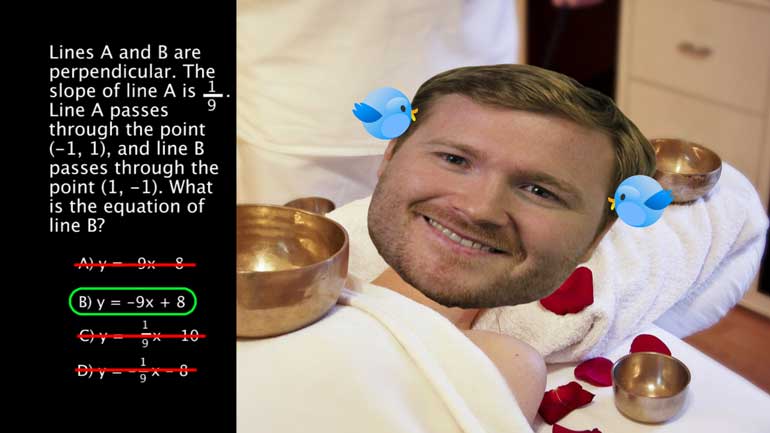ShmoopTube
Where Monty Python meets your 10th grade teacher.
Search Thousands of Shmoop Videos
Parallel and Perpendicular Lines Videos 23 videos
SAT Math 2.1 Geometry and Measurement. What is the measure of angle z in terms of x and y?
This video explores parallel lines and transversals: how to identify them both on a math test and in real life urban planning. What do the consecut...
Proving Lines are Perpendicular 795 Views
Share It!
Description:
Prove it, Shmoopers. We dare you.
Transcript
- 00:04
Proving Lines are Perpendicular, a la Shmoop.
- 00:10
Leroy, the city pigeon, is having a bit of a tiff with his country cousin, Roy Lee.
- 00:15
Leroy argues that the streets below form a perfect cross…
- 00:23
…but Roy Lee insists that the streets look kind of… slanted.
- 00:30
How can Leroy prove that the streets do, in fact, form a perfect cross,
Full Transcript
- 00:34
and that they’re perpendicular?
- 00:36
First let’s think about the streets as two intersecting lines on a map.
- 00:41
Then we can use some useful theorems that will help us determine if the lines are, in
- 00:45
fact, perfectly perpendicular.
- 00:49
If two lines are perpendicular, they’ll form four right angles at their intersection.
- 00:56
Right angles measure 90 degrees, and it appears that Leroy’s two streets create four right
- 01:02
angles at their intersection.
- 01:04
But Leroy wants to make sure.
- 01:08
Another theorem Leroy can use follows the same principle:
- 01:11
It says “If two lines intersect to form a linear pair of congruent angles,
- 01:17
then the lines are perpendicular.”
- 01:19
Angles 1 and 4 are adjacent and form a linear pair.
- 01:23
Two angles in a linear pair are always supplementary,
- 01:25
which means that their measures must add to 180 degrees.
- 01:29
That means the measure of angle 1 plus the measure of angle 4 equals 180 degrees.
- 01:35
If these angles have to be congruent, their measures should to be equal to each other.
- 01:39
So let's substitute the measure of angle 4 with the measure of angle 1.
- 01:43
They're both equal anyway, right?
- 01:46
We can add the measure of angle 1 and the measure of angle 1 to get 2 times the measure of angle 1.
- 01:52
To isolate the measure of angle 1, we can divide 2 by both sides
- 01:56
and get that the measure of angle 1 is 90 degrees.
- 01:59
Because the two angles are congruent, we know that 90 degrees must also be the measure of angle 4.
- 02:04
Since our 90 degree angles are a linear pair of congruent angles, like the theorem says,...
- 02:10
...we know the lines are perpendicular. Voila!
- 02:13
He even uses a protractor to be certain.
- 02:16
Looks like this theorem reinforces Leroy’s argument.
- 02:21
Leroy was indeed correct… the streets ARE perpendicular.
- 02:25
Oh, great. Now he’s going to do that obnoxious “victory strut” stuff.
Related Videos
This video explores parallel lines and transversals: how to identify them both on a math test and in real life urban planning. What do the consecut...
To prove lines are parallel, you need a third line. We at Shmoop (and the rest of the world) call it a transversal.
A sequel to the 1989 classic Segments, Lines, and Videotape, this video will change the way you think about lines, segments, and rays. Unless yo...
SAT Math 2.1 Geometry and Measurement. What is the measure of angle z in terms of x and y?

